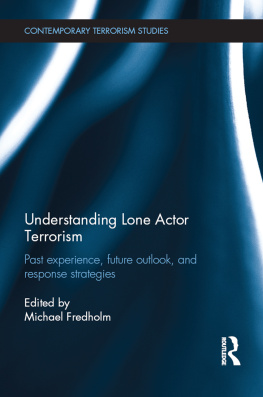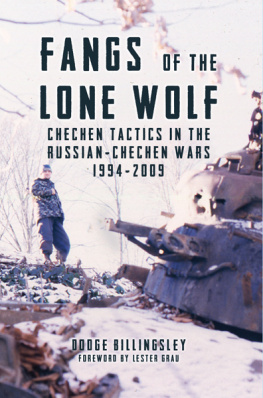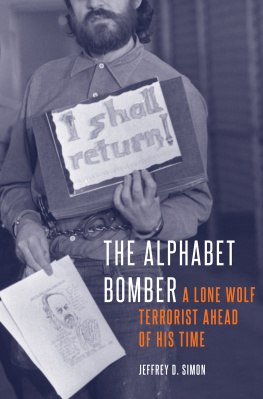Contents
Guide
Pagebreaks of the print version
THE AGE OF LONE WOLF TERRORISM
Studies in Transgression
STUDIES IN TRANSGRESSION
Editor: David Brotherton
Founding Editor: Jock Young
The Studies in Transgression series will present a range of exciting new crime-related titles that offer an alternative to the mainstream, mostly positivistic approaches to social problems in the United States and beyond. The series will raise awareness of key crime-related issues and explore challenging research topics in an interdisciplinary way. Where possible, books in the series will allow the global voiceless to have their views heard, offering analyses of human subjects who have too often been marginalized and pathologized. Further, series authors will suggest ways to influence public policy. The editors welcome new as well as experienced authors who can write innovatively and accessibly. We anticipate that these books will appeal to those working within criminology, criminal justice, sociology, or related disciplines, as well as the educated public.
Terry Williams and Trevor B. Milton, The Con Men: Hustling in New York City , 2015
Christopher P. Dum, Exiled in America: Life on the Margins in a Residential Motel , 2016
The Age of Lone Wolf Terrorism
Mark S. Hamm and Ramn Spaaij

Columbia University Press
New York
Columbia University Press
Publishers Since 1893
New YorkChichester, West Sussex
cup.columbia.edu
Copyright 2017 Columbia University Press
All rights reserved
E-ISBN 978-0-231-54377-4
Library of Congress Cataloging-in-Publication Data
Names: Hamm, Mark S., author. | Spaaij, R. F. J. (Ramn F. J.), author.
Title: The age of lone wolf terrorism / Mark S. Hamm and Ramn Spaaij.
Description: New York: Columbia University Press, [2017] | Series: Studies in transgression | Includes bibliographical references and index.
Identifiers: LCCN 2016050672| ISBN 9780231181747 (cloth: alk. paper) | ISBN 9780231543774 (pbk.)
Subjects: LCSH: TerroristsPsychology. | Radicalization. | TerrorismPrevention.
Classification: LCC HV6431.H3456 2017 | DDC 363.325dc23
LC record available at https://lccn.loc.gov/2016050672
A Columbia University Press E-book.
CUP would be pleased to hear about your reading experience with this e-book at .
Cover design: Faceout Studio
Contents
Simon Cottee
The Age of Lone Wolf Terrorism a massive study of lone-actor terrorism in the United Statesis the product of years of patient and dogged empirical investigation. It is also the culmination of a lot of hard thinking about the interior world and entanglements of that most quintessentially American iteration of contemporary terrorism: the atomized and anomic loner who kills for political purposes. Just what is it about these individuals that so captivates the authors of this book? Hamm and Spaaij, for their part, offer few clues; they are far too interested in their subject matter to indulge in any emoting about their own subjectivity. Nonetheless, it is not hard to intuit the rudiments of an answer to this question: lone actor terrorists present a conundrum, an endlessly fascinating perplexity. They were not born terrorists, and there was nothing inevitable about their trajectory toward terrorism. So how did they become transformed, or transform themselves, into terrorists? This remains an underexplored and dimly understood question, even in the field of terrorism studies, where the focus is almost exclusively on collective political violence. The enduring merit of The Age of Lone Wolf Terrorism is that it provides an empirically robust and theoretically nuanced framework for addressing how ordinary individuals can become the agents of extraordinary violence and destruction.
A common complaint leveled at scholarly work on terrorism is that it lacks a firm grounding in empirical research on actual terrorists and terrorist groups. The study of terrorism, Martha Crenshaw wrote in 2000, still lacks the foundation of extensive primary data based on interviews and life histories of individuals engaged in terrorism. There is some justice to the complaint. But it is not one that can reasonably be targeted at The Age of Lone Wolf Terrorism . Quite the contrary: drawing on an extensive database of all known cases of lone wolf terrorism in the U.S. between 1940 and mid-2016 (123 cases in total), The Age of Lone Wolf Terrorism provides a model for empirically driven research on terrorism, using rich case-studies, first-hand interviews with lone wolf terrorists (Today, the authors dryly comment, it may be easier for a convict to escape from an American prison than it is for a criminologist to enter one) and other ethnographic documents, to illustrate and support broader theorization about the social and psychological processes involved in lone actor terrorism.
There is a minor cottage industry of research on definitional issues related to terrorism. Hamm and Spaaij, thankfully, do not engage in any tortuous semantic exercises; they define lone wolf terrorism, commonsensically enough, as political violence perpetrated by individuals who act alone; who do not belong to an organized terrorist group or network; who act without the direct influence of a leader or hierarchy; and whose tactics and methods are directed by the individual without any direct outside command or direction.
What will you learn about lone wolves from reading this book? You will learn, variously:
- that since 9/11 high-velocity firearms have displaced bombs as the favored weaponry of lone wolves;
- that over the same period the target of lone wolf attacks has switched from civilians to law enforcement and military personnel;
- that a third of lone wolves, as if reading from a Quentin Tarantino movie script, reference and copy the example of earlier lone wolves;
- that lone wolves are becoming younger (the average age of the pre-9/11 lone wolf at the time of their attack was 38, compared to 31 for their post-9/11 counterparts);
- that, typically, lone wolves are white, unemployed, single men from an urban area and with a prior criminal rap-sheet;
- that lone wolf terrorism is largely male: there have been no women lone wolf terrorists in the U.S. since 1993, and only five out of the pre-9/11 sample were women;
- that lone wolf terrorism and cloudless mental health dont tend to go together: approximately 40 percent of the lone wolves in Hamm and Spaaijs database suffered from mental illness;
- that lone wolves are motivated by a combination of personal and political grievances;
- that lone wolves are enabled by others, in terms of both ideological inspiration and direct unwitting assistance;
- that an active engagement with, and immersion in, a warrior subculture is a crucial element in the moral career of becoming a lone wolf terrorist;
- that lone wolves nearly always broadcast their intent to commit terrorism; and
- that acts of lone wolf terrorism are often catalyzed by a triggering event.
The last five data points form the basis of what Hamm and Spaaij call the radicalization model of lone wolf terrorism, according to which lone wolf terrorism is the culmination of a cumulative process of human change and transformation. Although this suggests a certain neatness to the radicalization process, Hamm and Spaaij make it clear that their model isnt necessarily linear, insisting that the distinct and fateful phases they identify in the life-histories of lone actor terroristsgrievances, affinity with an extremist group and enablers, behavioral cuing of intent to do harm, and triggering eventsvary in the order in which they materialize.










